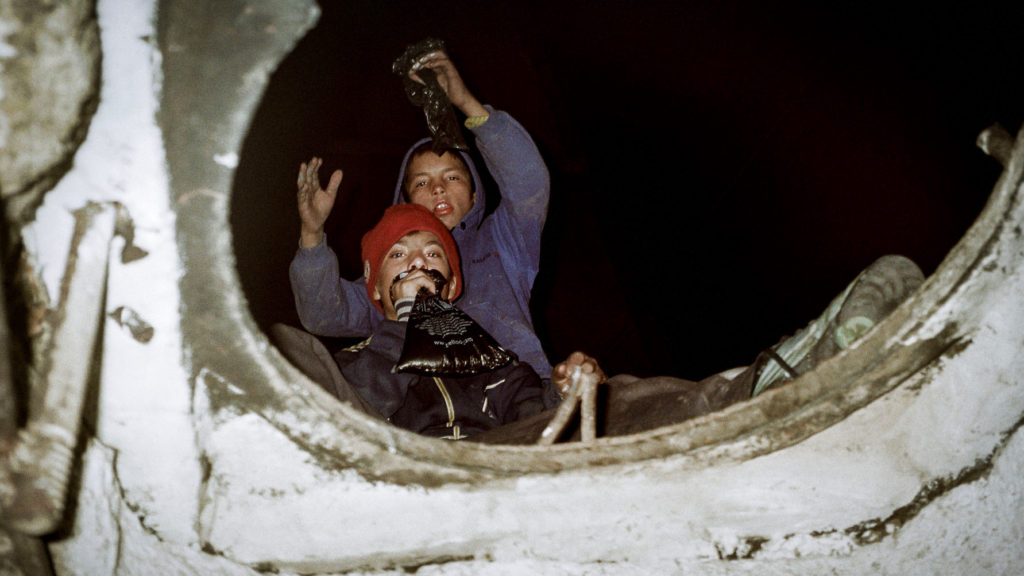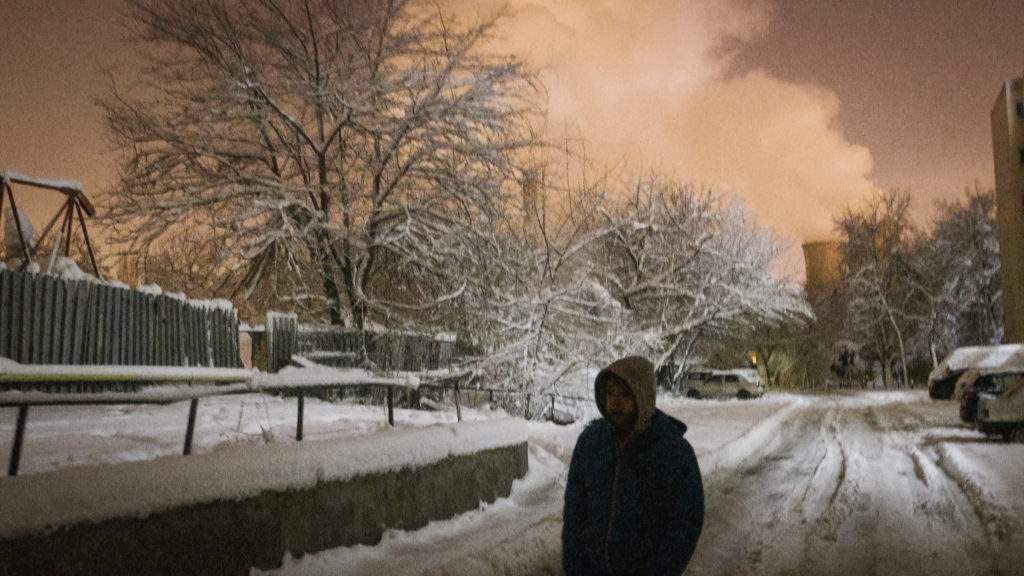Review: Bruce Lee and the Outlaw (2018), by Joost Vandeburg

The Dutch photographer Joost Vandeburg went to Bucharest with no particular plan, simply photographing the streets with people and animals inhabiting them. When he accidentally met one of the boys Nicu, he became not only his guide through the street life, but also his protagonist and collaborator of sorts in what became an emotionally charged film. Bruce Lee and the Outlaw uses the tenderness of the human heart to oppose the ugliness of the world around it.
Vandenburg has followed Nicu for six years, roughly from his 12th till his 18th birthday and many things happened to the boy, the titular outlaw, during his transformation from a young and charming rascal to a troubled young adult. He followed his life on the streets and underground in abandoned tunnels, and his abuse of both conventional drugs like heroin, and unconventional like Aurolac, a local brand of aggressive paint that Nicu and his buddies sniffed from bags. At one point, Nicu is diagnosed with HIV and tuberculosis which put his life in danger, but he also gets some unexpected care by complete strangers. In the end, the young man says that he is thankful to have many fathers, mothers, sisters and brothers.
One of his “fathers” is stated in the title. The man who calls himself Bruce Lee, and whose real name is Florin Hora, is a self-appointed King of the Underworld, a man usually covered in silver paint. He is a prophet, a madman, a drug dealer, but also a person who takes the street kids and stray animals under his wing, providing them with food and shelter. For Nicu and other homeless kids, adults and prostitutes, he is a father figure; for the police, however, he is a dangerous criminal. “Bruce’s” grip on reality is not exactly firm, for a good reason: he was one of the orphanage kids simply released to the streets when the communist regime fell, having to fend for himself completely alone.
The other “family figures” are the social worker Raluca who takes Nicu in after his illness and takes good care of him, but also filmmaker whose sense of ethics is right, both as a director and a human being. He knows when and how to get involved, to be present in the film, but he never shows an interest in being in the focus. Nicu is involved throughout, occasionally providing a voice-over commentary for the footage, which gives Bruce Lee and the Outlaw a bit of a meditative quality.

Vandeburg and his sound designer Ranko Pauković have to be commended for handling the situation with the narration taped in various points over the course of time with the boy’s voice changing – the pitch modulation is so good that is barely recognizable. However, there is a problem with Nicu’s comments: they tend to get repetitive, providing similar explanations to slightly different occasions and Nicu is not exactly a wordsmith.
Repetitiveness can be felt also due to the film’s editing which is completely non-linear and could be even considered associative. The editor Katie Bryer has a good instinct, but a bit of less time-hopping would do wonders to the film’s overall coherence. It even seems reasonable to sacrifice some chronological clarity for the maximum of the emotional impact. As it is, Bruce Lee and the Outlaw is one of the most poignant documentaries on the festival circuit.
Bruce Lee & The Outlaw screened in the main competition of the IceDocs film festival in Akranes, where it won the award for the best film.
Countries: UK, Netherlands
Languages: Romanian, Romani, English
Runtime: 85 minutes
Director: Joost Vandeburg
Cinematographer: Joost Vandeburg
Editor: Katie Bryer
Sound editor: Ranko Pauković
Music: Daniel Gadd
Producers: Andrea Cornwell, Noomi Rapace, Radovan Sibrt, Raymond van der Kaaij, Joachim van Trommel, Patrick Vernon, Orlando von Einseidel
Production companies: Grain Media, Revolver Amsterdam, Pink Productions
















